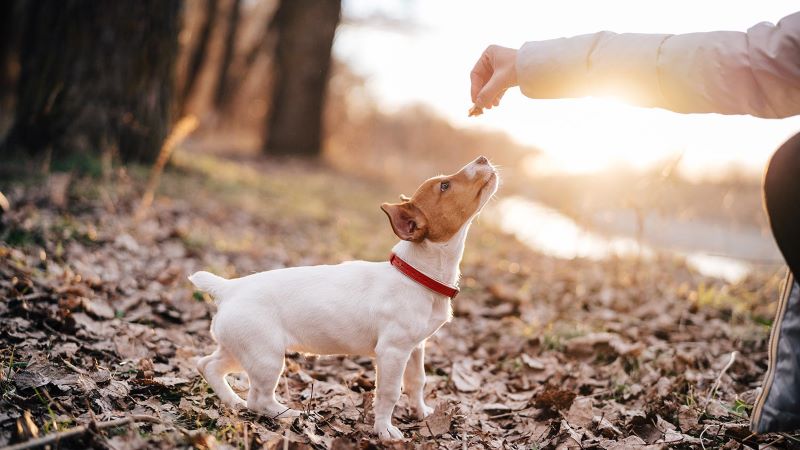Our house seems to be the party place after school, which is great for my kids, but not always great for my dog. If the kids are in the fenced in backyard, she’s out there racing around them, receiving the occasional ear scratching or game of fetch. If they’re in the front, someone has usually left the door to the house open and she’s racing around the neighborhood looking for a furry buddy. And what are my kids doing? Racing after her, calling her name over and over. Enter the need to have a “recall” word other than the name she hears all the time.
Whether you just brought a new puppy home from the breeder or adopted a dog from a shelter, you’re going to want to make sure you start him off on the right paw. Training your dog is an important part of pet ownership; here are three of the most important cues to help you get started.
Teach your dog to sit
According to Sarah Westcott, “sit” is the most essential cue to teach your dog. Westcott, CPDT-KSA and Owner of Doggie Academy in NY says this command is especially important when you have guests at your house. Sitting helps curb jumping up, inappropriate chewing, biting, and barking. It is also a relatively easy command to teach your dog. First, choose a small treat or reward. Next, ask your dog to “sit” and withhold the treat for a few seconds. Then relinquish the treat. Continue doing this daily. Once your dog has become proficient at maintaining the sit for a short time, increase the length of time you withhold the treat. Continue this practice until your dog understands that “sit” not only means to sit down, but also to calm down. Once your dog has this command mastered, you can use it to keep him from excitedly knocking down your company as they walk in the door!
Teaching the 'come' command
This command is not only lifesaving, but can also further develop your bond with your dog. First, pick a word that you haven’t already used with your dog. For example, if “come” is a word he routinely ignores, choose a new one like “here.” Do NOT use your dog’s name as your recall word. He, like our Hattie, hears that name often and will be less likely to understand what you want from him. Next, choose a partner and play hide-and-seek with your dog. Each person should have a couple treats, and take turns using the recall word. When your dog responds by going to you, relinquish a treat. Make it more difficult by one partner going into the other room to call your dog. Next try going outside. Once you move outside, your dog will be more distracted by sounds and smells, so you may want to up the treat factor. Be consistent, and continue practicing, using the same recall word, even after your dog has mastered the cue. As I mentioned before, this one is a lifesaving command, and one to make sure your dog is very comfortable with.
Teach your dog not to jump
I honestly cannot wait to try this one with my dog. In the post, Obedience Training for Dogs, Victoria Schade mentions using body language to teach your dog an automatic sit, which can later be used to keep him from jumping. To teach your dog the anti-jump cue, first grab some treats and take your dog to a quiet room. Next, stand up straight and cross your arms. Move around the room, then come to a stop. Your dog will probably automatically sit since he can smell your treats. The second he is in the sitting position, say, “Yes!” and relinquish a treat. Repeat this over and over, especially in the foyer or entrance to your home, where the jumping occurs most often. According to Schade, this cue is so simple that even a child can use it to correct the jumping.
Be consistent
None of these cues will continue to work without constant revisiting. As Dr. Lisa Radosta points out, “If behaviors aren’t practiced, they will be extinguished.” Now, I’m off to put these essential cues into practice!

